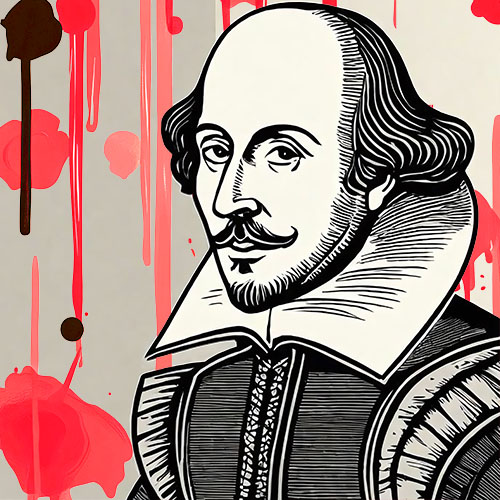This 1930s counterfeiter had the secret service stumped for nearly a decade.
Call Him Mister Eight-Eighty, Then
As long as humans have traded cash for goods and services, there has been a smaller, sneakier subset of schemers in the background, deciding it’d be easier to fake the stuff than to work hard and long enough to earn it cleanly.
Counterfeiting is far from a dead trade. An estimated $220 million of fake money was in circulation in the U.S. in 2012. And counterfeiters continue to pop up in all shapes and sizes: Earlier this year, a library in Massachusetts reported a surge of people trying to pay their overdue fees with tokens from Chuck E. Cheese. (Hey, you can’t knock the hustle.) But in the annals of counterfeiting, one of the weirdest stories in American history also happens to be one of its most infamous. Back in the 1930s, the Secret Service spent an entire decade tearing its own hair out, trying to pin down the identity of a New York City man known only as “Mr. Eight- Eighty.” The fact that this man eluded agents for so long is all the more impressive, considering he only ever counterfeited one-dollar bills.
Also, he was incredibly bad at it. We’re talking didn’t-knowhow- to-spell-Washington levels of ineptitude. After using his first phony bill at a cigar store in 1938, he was launched. But unlike most counterfeiters, Mr. Eight-Eighty — so nicknamed because that was the number on his file — never went to the same place twice. Nor was he in a rush to spend his fake bills; he only seemed to go through one or two each day. These factors, along with the fact that the $1 bill is so ubiquitous that most people don’t look at them too closely, meant that the Secret Service had almost no leads to go on. In that first year, Mister Eight-Eighty successful distributed nearly 600 bills, and almost 3,000 in his first five. Some even slipped past the banks, recirculating to places as far away as Atlanta and Seattle.
Now, the Secret Service obviously had bigger fish to fry. But Mr. Eight-Eighty, frankly, drove them nuts. And no detail of the case was more infuriating than the sheer sloppiness of the counterfeiting itself. An internal memo about Mr. Eight- Eighty’s work described the paper as “cheap,” the portrait “poorly executed,” the etching “faulty,” and some of the letters “illegible,” “misshaped,” and “otherwise crudely outlined.” Over time, the fake bills somehow got worse: Soon the Secret Service started coming across bills with George Washington’s name actually misspelled, under the portrait, as “Wahsington.” Still they couldn’t catch him.
It wasn’t until 1948, nearly a full decade later, that fate intervened, in the form of a fire on the top floor of a brownstone tenement on the Upper West Side of Manhattan. While putting out the blaze, firefighters threw the contents of the apartment — mostly junk, they figured — out the window into the vacant lot next door. That’s where a group of neighborhood kids came across some printing plates and what they called “stage money,” and which one of their dads later realized were actually counterfeit bills. When he reported the money to the Secret Service, however, the man couldn’t believe how excited they were. “You’d have thought I was Dick Tracy calling in a hot tip to the chief,” he said.
So, who was Mr. Eight-Eighty? As it turned out, he wasn’t a mastermind. He wasn’t even a career criminal. No, the man who kept the entire Secret Service on its heels for almost a decade turned out to be a toothless, elderly widower named Emerich Juettner (better known as Edward Mueller). A superintendent turned- junkman, Mueller started counterfeiting in order to make ends meet after his wife died and his children moved out. He lived a simple lifestyle, and mostly used the fake cash to buy groceries and dog food.
When the Secret Service confronted him about all this, Mueller cheerfully admitted his crime right away. He was sentenced to a year and a day in prison and ordered to pay a fine — of one dollar.
This article originally appeared in the December, 2017, issue of Penthouse, where Michael Hingston was a writer based in Edmonton, Alberta. He was our Executive Editor’s kindergarten boyfriend, according to that article. … And who says we do not know how to suck up in style around here? Anybody can buy treats or do extra work, but throwing out some love to your boss’s boyfriend at the age of five demonstrates some real pizzazz, right?
Perhaps most interesting in our research on “Mr. Eighty-Eight” was the fact that they apparently made the story into a “gentle romantic comedy” which earned a Best Supporting Actor nomination from the Academy Awards for Edmund Gwenn. You probably know Mr. Gwenn as Kris Kringle in “Miracle on 34th Street,” though. Since perhaps no better movie exits which enourages us to believe in magic, someone in the art department was filled with inspiration upon learning of our intent to reference it, and thus created this. …
Or they could have just been desperate to have some fun with something that does not include naked people as a primary focus. Sometimes that happens.




















